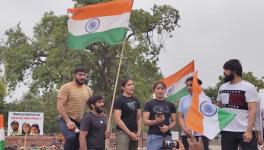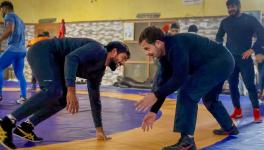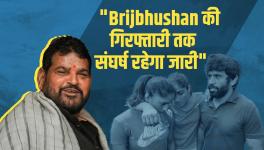Tradition Meets Trial: A Clash to Define India’s Middleweight Contender For Tokyo
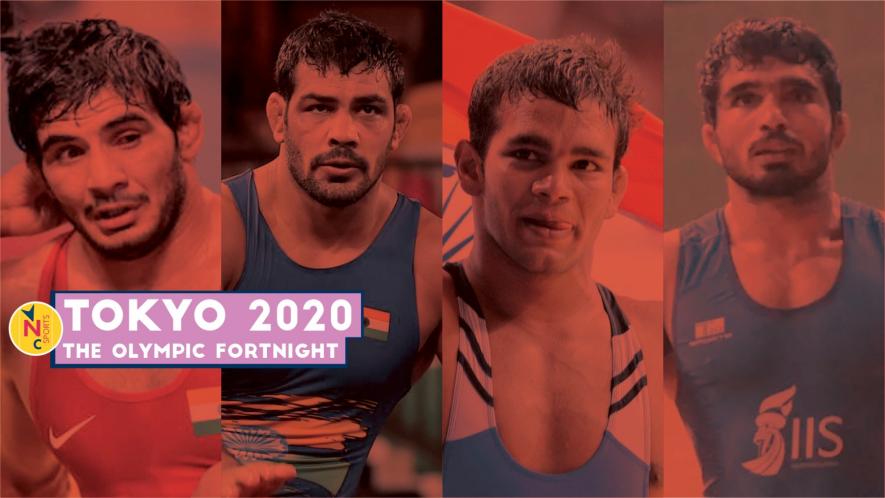
The postponement of tournaments and the Tokyo Olympics have opened up the possibility of a rare four-way tussle in Indian wrestling — Jitender Kinha, Sushil Kumar, Narsingh Yadav and Parveen Rana in the 74kg freestyle category.
Sushil Kumar, Narsingh Yadav, Parveen Rana and Jitender Kinha. Indian wrestling suddenly seems rich in the middleweight category. The 74kg, which arguably produces the best wrestlers in the world in any given generation, could have a former double Olympic medalist and world champion, a former world championship medalist, and two Asian medalists in the mix once the trials are staged to decide who gets to compete in the qualifiers for the Tokyo Olympics in 2021.
The national trials could be held in February next year — the timeline was set by the Wrestling Federation of India (WFI) with the hope that the coronavirus crisis would be under control by then, if not completely subdued. If it happens, it would also symbolise closure to one of the most disreputable episodes in Indian wrestling history.
The problem with foul play, however, is that the stink invariably hangs around in the air. Especially so in Indian wrestling where the dynamics on and off the mat does not exactly allow for straightforward resolution to what in essence is a simple sporting query.
Click | For more from ‘The Olympic Fortnight’ series
Who is India’s best wrestler in the 74kg freestyle division? The answer could be easily figured out on the mat, at best in straight results, or worst via tie-breaks or rebouts. But when ethics itself gets pinned on the mat regularly, things can only get complicated.
The journey towards the complexities these four wrestlers find themselves in possibly began right at the start of their careers in the sport, in their akharas.
****
It is almost like a chant. When you walk around a wrestling training facility — any of the akharas big or small — during physical conditioning drills, the relentless, almost mechanical, execution of burpees, jump-squats or push-ups by the trainees creates within itself a weather system. Humid, steamy… Something similar to the monsoon-ish summer we get to endure in Delhi during July and August. Beyond the mercury and pools of sweat all around, the movement of muscles creates a unique frequency. If you train your ears, you can hear that buzz. It’s hypnotic. A meditative chant. Exercise is, after all, meditation!
And, in this muscular rote, memory is forged into the cells and muscle fibres — for endurance, explosive strength and for technical versatility and adaptability. In this physical embodiment of chanting, philosophies and certain behavioral traits are instilled in the young wrestler too.
Also Read | Ten Step History of Art at the Summer Olympics
In behavioural psychology, they call it Classical Conditioning. Indian wrestling’s training tradition revolves around a liberal use of it. Indian wrestling is rich because of the unquestioned commitment an elite wrestler gives to his sport, the value instilled in him or her via this form of conditioning. Indian wrestling is that much poorer because Classical Conditioning exhorts unquestioned and unconditional loyalty to the process.
The irony is stark, isn’t it?
There is no randomness in the number of burpees or bridges a wrestler does in the morning sessions, typically reserved for fitness drills. 1,000 is a norm. 1,000 is a start for the elites, for the likes of someone like Sushil, whose capacity for enduring hours of physical drills are legendary.
The coach or a senior picks the number — possibly random, possibly not. And there is no questioning. You are expected to execute each and every command in that journey which will one day take you to the level Sushil pehalwan has reached now. This was overheard when a coach drilled into a young, and a little “less serious”, trainee at Delhi’s Chhatrasal Stadium in 2012 the importance of the method. We were hanging out with Sushil — freshly back from his silver medal-winning show at the London Games — in his old room there.
Seriousness in sport is a pretty vague idea. It can be stretched either way. One can, for instance, interpret the antics by Usain Bolt before the race as a sign that he is less serious about the silly 9-odd seconds run that will soon follow. Till he starts running that is. While it is another sport, the idea remains the same. Seriousness on the mat is a complex equation, and is not just a sum or reps.
The boy who was pulled out of a workout for being less serious could have been fine in his own right. But then, he is not expected to present his case.
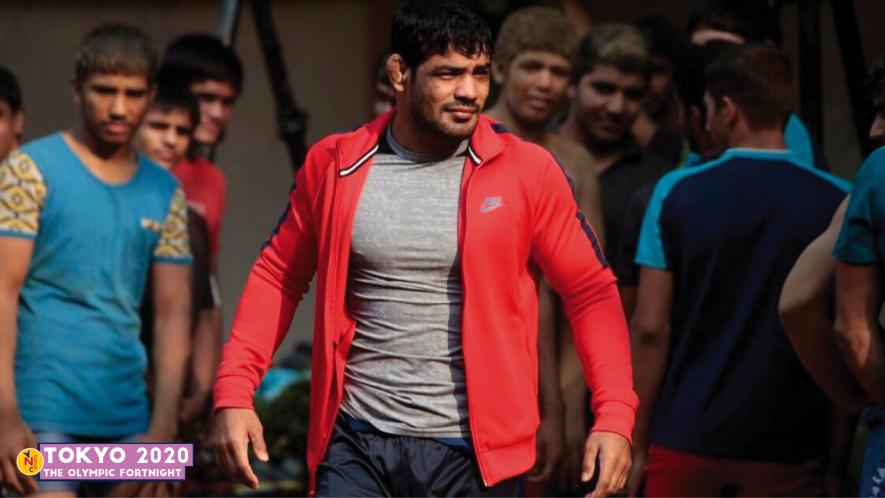
The wrestler is conditioned not to question — and it starts with training in the teens or even earlier. At that stage he or she knows no better to ask larger and telling questions around training methodology or the logic of doing 1000 push-ups and not 990.
Over time, he learns to become a mute party to the larger implications — nepotism, favouritism and so on. They call it tradition. By now we are all too familiar with the tradition trope and its liberal use to shackle liberty. There is a wrestling version of it too.
Also Read | How Athletics Supplanted the West Indian Fast Bowling Tradition
It was evident when Sushil suddenly decided to fight in the Nationals in 2017. All but two wrestlers showed the will to fight him — two journeymen — one from Mizoram, the other from Jharkhand. Sushil won with ease. Rana, who was touted as the next big thing in the division after Sushil, chose to give a walkover. He, in fact, did not come to the mat either. Maybe an indication that there could have been something bigger at play behind the scenes.
The other wrestlers who gave walkovers chose to come in, touch Sushil’s feel, and then throw away the match. Wrestling fraternity celebrated it as tradition. What it happens to be is nothing other than disrespect of the sport, the mat and the stage.
A more deplorable incident came to the fore in December the same year when Sushil and Rana fought in the trials for the 2018 Commonwealth Games. Sushil won the ill-tempered bout but things spilt outside the mat. Rana’s support cast, including his brother, were manhandled by Sushil’s supporters.
The wrestler had no part in it, he claimed. Sushil, possibly, did not. What had a part in it was over-adulation — the touching of the feet by each and every grappler slated to take on the senior included. While showing respect is fine, doing so at the expense of the sport itself isn’t. And it takes on another dimension when supporters expect it and try to force it in the name of tradition.
And we can’t question tradition, can we?
It was a similar kind of attempt to forcefully exert one person’s will and desire which led to the biggest controversy to hit Indian wrestling in recent times, changing the life of one wrestler involved in it, and forever tarnishing the reputation and goodwill of the illustrious other party in the mix.
*****
Indian wrestling’s systemic mess blows the pressure value every now and then, and the stinky stuff, invariably, hit the ceiling. Four years back, in the build-up to the Rio Olympics, the Sushil vs Narsingh Yadav saga of disrepture played out in the Sports Authority of India (SAI) premises in Sonepat as well as courtrooms in the capital. The truth [and lies] and other details of the controversy still remain murky but Yadav was penalised for using a banned substance even as Sushil was fighting a court case to earn a trial for the Games. Yadav claimed sabotage, hinting at the role played by Sushil’s “well wishers” in the episode.
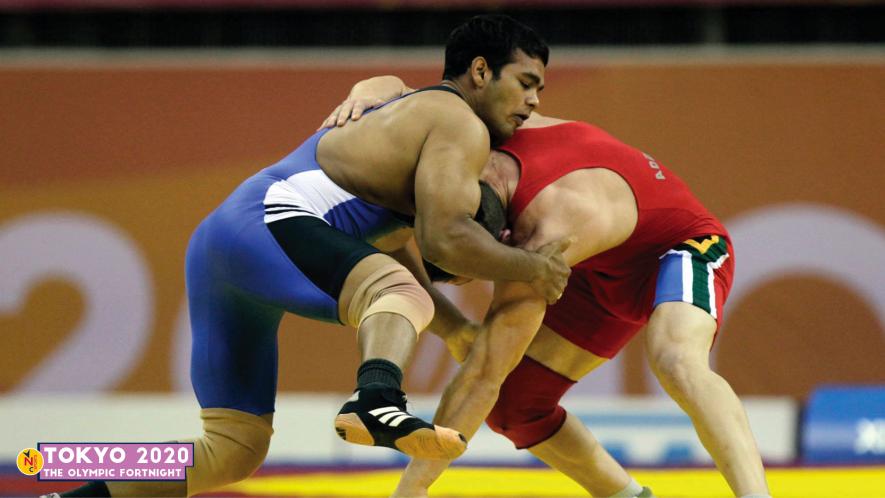
The original qualifying slot was won by Yadav at the Worlds the previous year and by Indian wrestling norm (which is wrong in itself considering the nature of the injury-prone sport, and a case for debate, perhaps some other time), the athlete who earned the spot gets to go, unless he is injured or caught in unforeseen circumstances. Incidents such as doping... We do catch the drift, don’t we?
Last weekend, Yadav, who lives in a Mumbai suburb, finally got closure to the ordeal. His four-year ban got over officially when he received a World Anti Doping Agency (WADA) communication. He is ready to stake his claim in the Indian wrestling team for the Tokyo Olympics in 2021. He cites destiny and karma for this turn of events. Coronavirus has been good for the 2015 World Championship bronze medallist.
“I still have it in me,” insisted Yadav, 30. “I will only get real closure after I win an Olympic medal. I know for sure that it is my destiny. This postponement tells me that it is my destiny. I will train harder now and get back to the national camp and the Indian team.”
Sushil, himself, is training harder, he claimed recently. It is hard to fathom what he seeks at the moment, to be honest. At the World Championships last year, the 2010 edition champion was outclassed. He was clearly a step too slow, a tad less assertive in power matters, and a little out of sorts too. Signs indicate that his time is up on the world stage at least.
Also Read | Run for Your Life. Running is Life
At 37, however, he still seeks a shot at that gold he always wanted. And perhaps, it is also an attempt to wipe his slate clean off the 2016 ignominy — Sushil ended up not getting a chance to compete in Rio, belittling his stature in the process.
That chance went to Rana, who was a junior world medallist, and quite ready to step into the shoes of Sushil, and fill in the void left by the ban of Yadav. Rana, following the controversies with Sushil’s supporters, has been off the grid, citing injuries. It remains to be seen whether the 27-year-old wrestler would be fit and ready for the trials next year. Maybe this Covid-19 induced break is what he needs to get back to the basics. Get back to those conditioning drills sans controversies and looming spectre of high-stakes bout to get his bearings back to take on the rest.
The last piece in the four-men Indian middleweight puzzle is Jitender [Kumar] Kinha. The 25-year-old won silver at the Asian Championships in New Delhi earlier this year, a tournament which was skipped by the best in the continent. Most countries sent in their B teams, barring the hosts, of course.
Jitender had to finish on the podium to earn a berth for the then-slated Olympic qualifiers in Kazakhstan. He won silver but the game of attrition he played, making hard weather against opponents who were equally straightjacketed, didn’t inspire any confidence in the notion that he is to be a flag bearer for India. Nor does he seem to possess the quality to make a mark if he makes it to the Olympics. He is currently training in August company though — with Bajrang Punia at the Inspire Institute of Sport in Karnataka. He is coached by Shako Bentinidis, Bajrang’s personal coach. Maybe, he will be primed by the time the draw for the bouts are made — a four-way tussle which could truly mark the end of an era in Indian wrestling, among other closures.
It would be a rare occasion in Indian wrestling as well. Hopefully, we won’t be left standing at the sidelines with an unanswered question after the day.
Who is India’s best Indian wrestler in the 74kg freestyle division? The answer is key to many things. To start with, it will help find an answer to the more pertinent question: Is India’s best good enough for the world?
That can only be answered if indeed the person who gets onto the mat at the Olympic qualifiers for India — or any international competition for that matter — is a true bearer of the tag of being the number one in the country.
That happens very rarely too. We happily call it tradition, unquestionably so!
Get the latest reports & analysis with people's perspective on Protests, movements & deep analytical videos, discussions of the current affairs in your Telegram app. Subscribe to NewsClick's Telegram channel & get Real-Time updates on stories, as they get published on our website.









